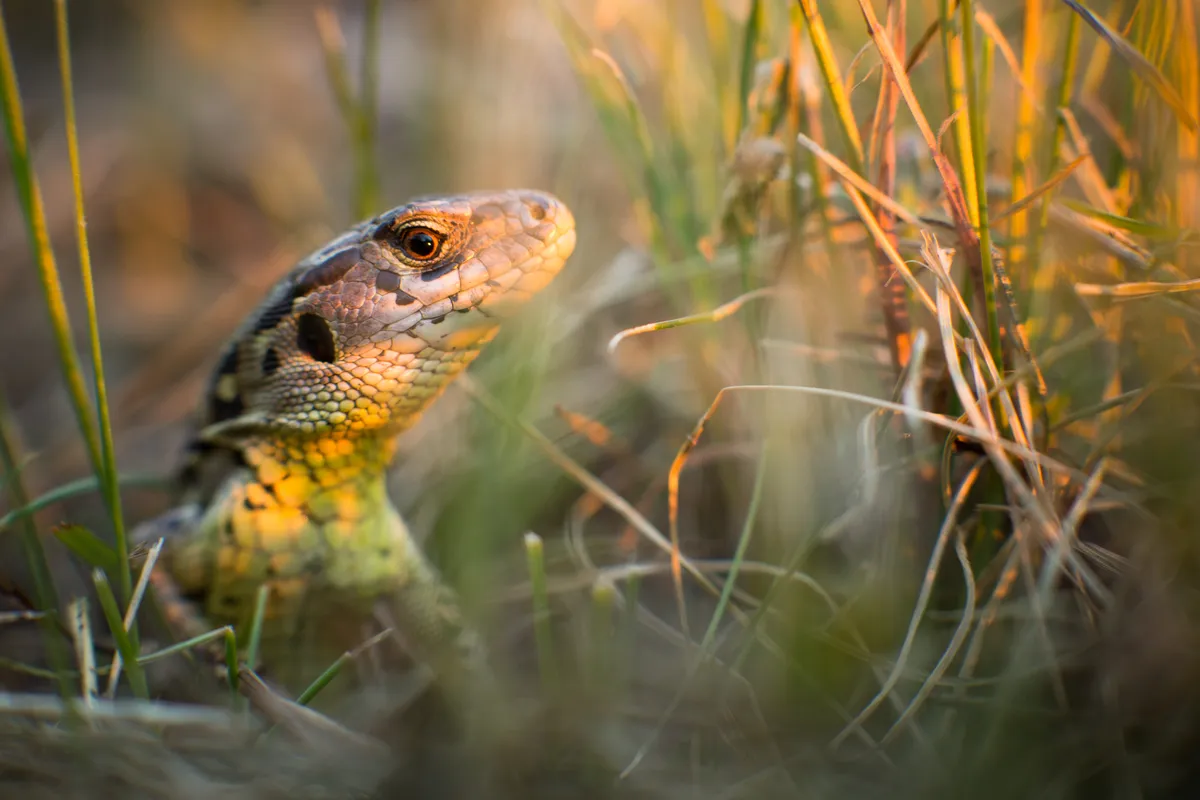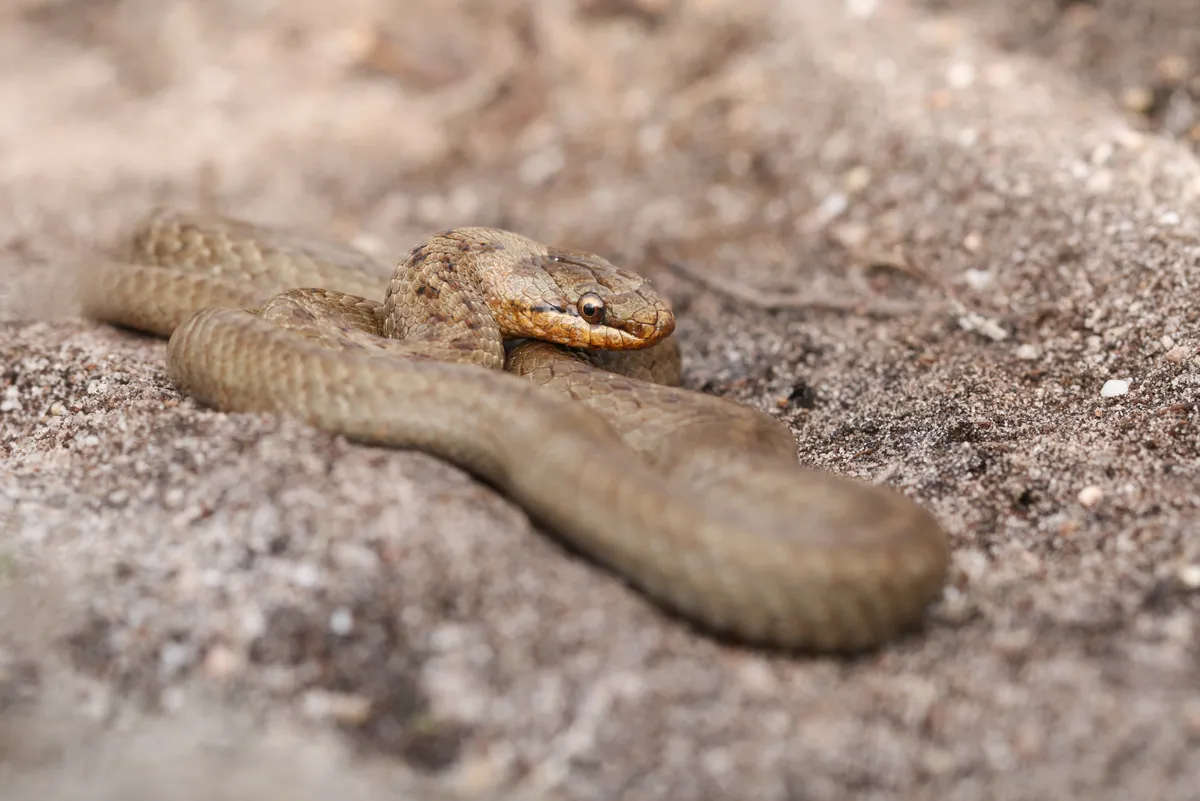Until 1859, smooth snakes – Coronella austriaca – were not recognised as a species, but a specimen studied by Dr JE Gray was determined not to be a grass snake variant as previously believed.
Such is their secretive nature that smooth snakes are lightly studied.
In this guide we take a closer look at smooth snakes in the UK, revealing information on how to identify them, where they live and what they eat.
Interested in learning more about British wildlife? Check out our guides to snakes, frogs and toads, and deer.
Reptiles of the British Isles
Discover the fascinating world of snakes, lizards and slow worms with BBC Countryfile Magazine's guide to Britain's six native reptiles.

What does a smooth snake look like?
They are small, slender snakes, rarely measuring more than 70 cm in length, and are brown or grey in colour with darker, broken bars along the back.
The scales are smooth (hence the common name) unlike the keeled scales of our other snakes, and the eye is small with a round pupil. There is a distinctive, heart-shaped crown on the head from which it gets the Latin name Coronella.

Smooth snake distribution
Our rarest reptile, the smooth snake is restricted to the heaths of Surrey, Dorset and the New Forest, with one or two reintroduction programmes hopefully extending that range.
Smooth snake diet
The smooth snake hunts other reptiles, which it ambushes. The sand lizard is often preyed upon by the smooth snake which seizes its prey and then constricts it in tight coils.
It has small teeth that can inflict a mild scratch-like bite on humans but there is no venom and no danger.

Smooth snake habitat
Smooth snakes spend much of their life under ground, raising their blood temperature through contact with their surroundings rather than directly from the sun. This behaviour means they are often drawn to artificial refugia, such as corrugated iron sheets, which allows population monitoring. It is, however, illegal to knowingly disturb a smooth snake.
They are afforded similar protection as the sand lizard, with both species occurring alongside one another.
Smooth snakes are more tolerant of heat than our other native snakes, and might be seen in the open on warm, sunny days. A quiet walk around a southern heath might offer a glimpse of a smooth snake, although an organised walk with a licenced guide might be a better bet. The ARC are running the ‘Snakes in the Heather’ scheme to raise public awareness of the smooth snake.

